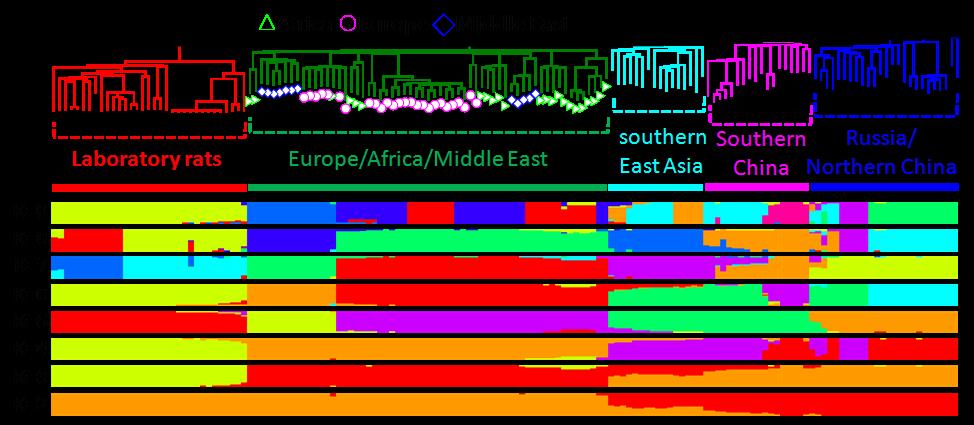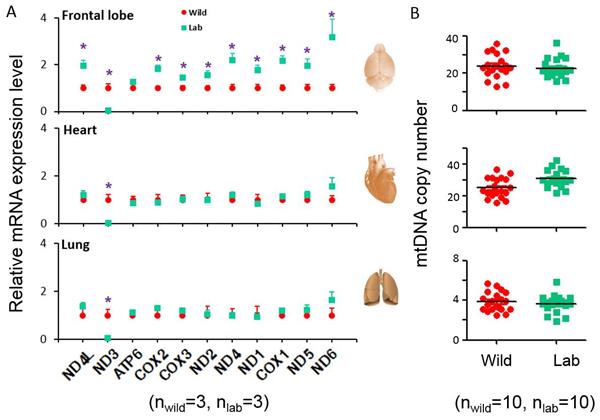The laboratory rat, which has been widely used in biomedical research as an animal model for ~160 years, is commonly believed to be domesticated from wild brown rat. Compared to their wild ancestors, laboratory rats exhibit different morphological, physiological and behavioral attributes. However, the genetic mechanisms underlying these phenotypic differences remain elusive.
Researchers including ZHANG Yaping, WU Dongdong and ZENG Lin from Kunming Institute of Zoology, Chinese Academy of Sciences (KIZ, CAS) revealed the genetic mechanism of origin and domestication of the laboratory rats based on the genomic and transcriptomic data.
Based on methods of population genetics, such as FST and cross-population extended haplotype homozygosity (XP-EHH), they scanned regions showing high differentiation between the laboratory rat and wild brown rat.
Compared to wild brown rat, many genes involved in the nervous system, particularly FOXP2, B3GAT1 and CLOCK, have evolved under artificial selection in the laboratory rat, and expression level of these genes were significantly up-regulated in the nervous tissue of laboratory rat.
These changes likely enhanced the learning ability and regulation of circadian rhythm to promote successful domestication of laboratory rat.
Brain functions are quite energy intensive relative to the rest of the body, enhanced learning ability in the laboratory rats likely placed additional energy demands. As expected, many genes responsible for energy metabolism including mitochondrial genes exhibited a substantially increased expression in the brain of laboratory rats compared with wild rats.
The findings will be helpful for understanding the origin and evolution of the laboratory rats as well as the process of domestication.
Related work has been published recently on Molecular Biology and Evolution https://doi.org/10.1093/molbev/msx238.
This work was supported by the Strategic Priority Research Program of the Chinese Academy of Sciences, and the National Natural Science Foundation of China.

Phylogenetic tree and population structure of laboratory rats and wild brown rats. (Image by ZHANG Yaping’s Group)

Relative mRNA expression levels of mitochondrial coding genes (A) and mtDNA copy number (B) in wild brown and laboratory rats. (Image by ZHANG Yaping’s Group)
(By ZENG Lin, Editor: HE Linxi)
Contact:
Linxi HE
helinxi@mail.kiz.ac.cn
